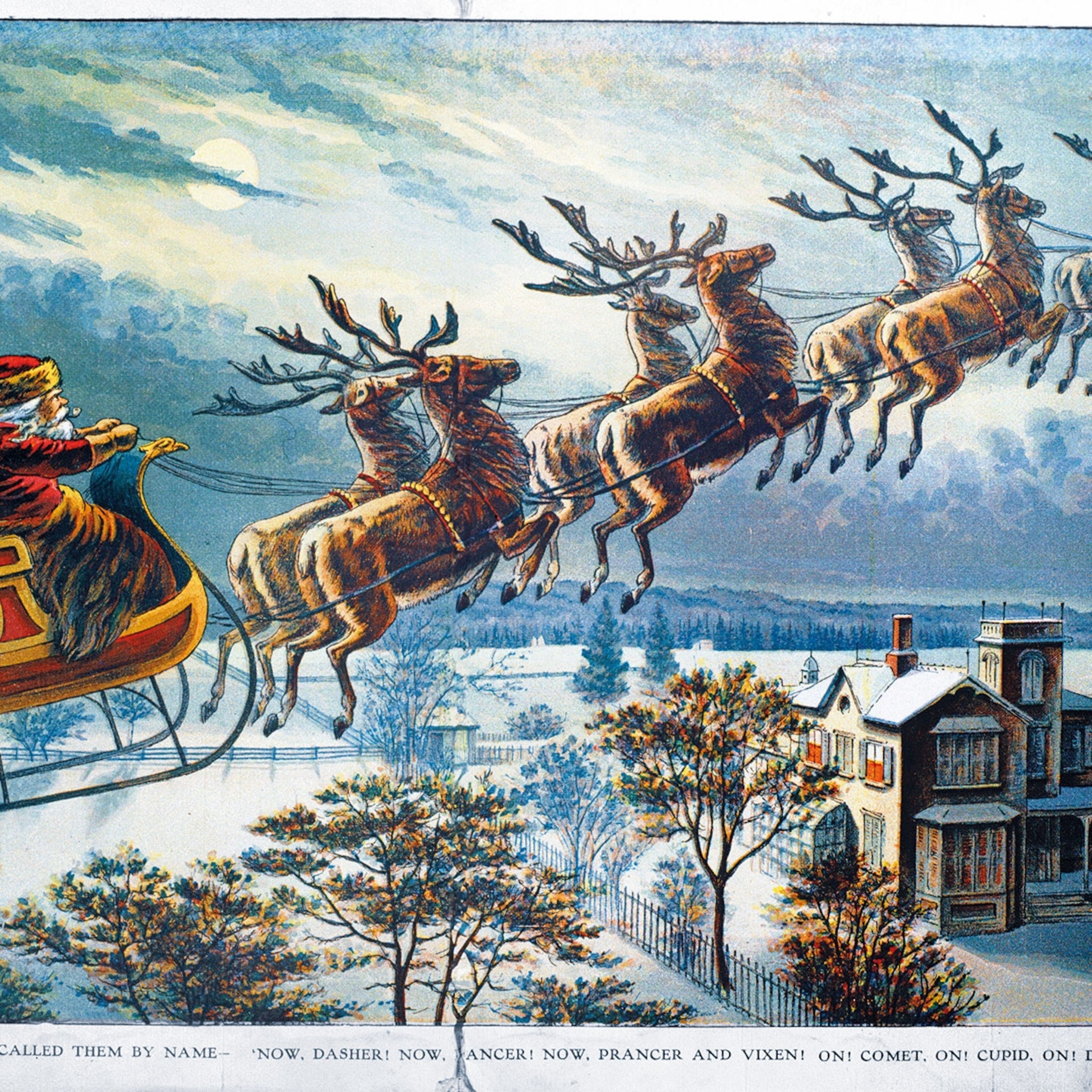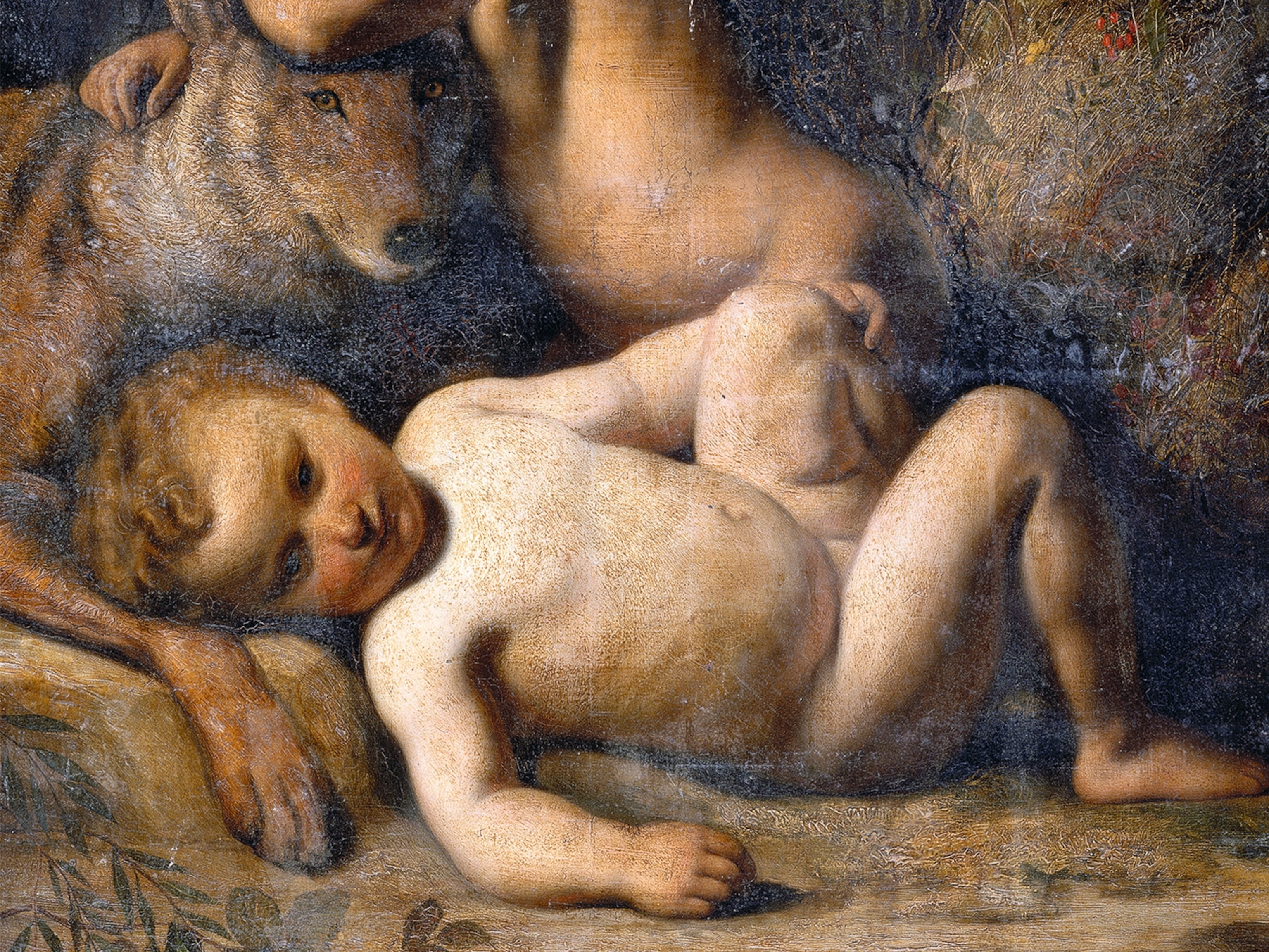
Streaming Santa? How Mr. and Mrs. Claus are keeping up with the times
He’s delighting kids with virtual visits; she’s stepping out of Santa's shadow.
Santa Claus has seen many Christmas changes since the original St. Nicholas wandered the slums of fourth-century Turkey giving presents to the poor. But aside from the 1823 publication of “A Visit from St. Nicholas”—which overnight canonized Santa’s red suit, full beard, and “bowl full of jelly” tummy—the old boy has seldom been subject to so much change so quickly.
In two years of COVID-19, many of Santa’s young visitors have moved from in-person moments on his lap to remote sessions on his laptop. The demise of shopping malls has led to more appearances at holiday parties and corporate events. And Mrs. Claus, once largely relegated to keeping excited children in line, is increasingly taking her place next to Santa on his throne—and sometimes having the spotlight all to herself.
The Santa gene
It’s the height of the holiday season, and I’m meeting “Santa” Ed Taylor the way most kids did last year: via Zoom. But even though he's across the continent from me at his home in Oregon, Taylor’s jolly spirit is palpable. His smile is contagious, the twinkle in his eyes is downright sparkly—and there’s no doubt that his full, flowing beard is 100 percent real.
Taylor was a reluctant Santa at first. Nearly 20 years ago, when he was running a Northwest marketing firm, a buddy who’d taken on a volunteer Santa gig got sick. He asked Taylor to fill in for him.
“I thought, ‘Really? Santa?’” he recalls. “But it was for a fundraiser, and I said I’d do it.”
To this day, Taylor gets chills when he recalls walking into that hotel banquet room and having his first Santa experience.

“Everybody loves Santa,” he says. “I loved them back, I guess. A friend later told me, ‘Your Santa gene awoke that day.’ And he was right.”
For Taylor, that chance event launched a career that is, in the jolly old elf realm, kind of legendary. Taylor has led the Santa Monica, California, Christmas parade, lit the Paramount Studios Christmas tree, appeared on dozens of TV shows and commercials, and spread Christmas cheer at scores of corporate events, including a holiday kickoff at, appropriately, the headquarters of the Mattel toy company.
Those gigs pay the bills, but Taylor feeds his own Christmas spirit by having one-on-one Santa visits with special needs children and through his work with the Los Angeles Dream Center, which serves underprivileged people around the city.
“We did a Christmas in July where Santa went door to door, apartment to apartment, delivering things people needed,” he says. “Thanks to Justin Turner of the Los Angeles Dodgers and his foundation, Santa got to deliver 100 bicycles to the children of inmates at the Los Angeles women’s prison. It’s the sort of thing that just melts your heart, whether you’re Santa or not.”
Because he’s in such demand, Taylor had been flirting with virtual Santa visits for several years—a technological grandchild of the old “Phone Call from Santa” services that flourished back in the analog era. But when COVID-19 hit in 2020, he and his fellow Clauses faced a new reality: For the time being, Santa would need to conduct his visits via the Internet from the North Pole.
In the spring of 2021, hundreds of Santas convened via Zoom for what Taylor now refers to as a Worldwide Claus Convergence. On their agenda was one item: How to evoke the Santa Claus experience online.
“We all agreed on one thing,” he says. “The idea of Santa just not showing up was not an option.”
During the conference, Taylor noticed one Santa who seemed to be sitting in a fantastic room with a roaring fire and snow falling outside the window. “I said, ‘Hey, you! Tells us about the North Pole you’ve got there!”
It turned out the Santa in question was using simple green screen technology to superimpose himself on an animated background. “That was our answer!” says Taylor.
For the following months, Santas around the globe worked to master the technology. The only question was: Would children respond to a virtual Santa? The answer amounted to a Christmas miracle.
“We were overwhelmed,” Taylor recalls. “I used to do a couple of hundred Santa visits per year, but I ended up with 550 visits of 12 minutes or longer. It was insane!”
Before each virtual visit, parents filled out an online form with each child’s name, plus insider information like their ages, hobbies, and what Santa brought them the previous year.
“As a result, the visits became even more magical,” Taylor says. “I could say things like, ‘Tell me about ballet! I know you’re doing great! And their eyes would open, like, ‘Santa knows stuff!’”
Now, Taylor says, many families are making virtual visits part of their family Christmas traditions. That creates a continuing demand for a whole new skill set for future Santas.
“There’s a vast difference between a momentary encounter with Santa at a mall and an online visit that could go five minutes or longer,” Taylor says. “Santas need to be trained, not only in the technology involved, but in ways to sustain a visit.”
One big early challenge, he recalls, was in schooling Santas on how to maintain their jolliness.
“A lot of these guys were more biker than Santa,” Taylor laughs. Now, through his 3,000-member Worldwide Santa Claus Network, Taylor trains Santas worldwide, beginning in January each year.
Taylor’s is just one of several thriving Santa schools around the U.S. The “Ivy League” of Santa training grounds may be Michigan’s Charles W. Howard Santa Claus School—named for a legendary Santa of the 1930s—which has been conducting intensive classes for 85 years.
“Whether they’re paid Santas or volunteer ones,” says Taylor, “I find they’re all committed to doing a great job.”
Mrs. Claus comes into her own
Like many young girls in Toronto, Canada, Cat Conner was dazzled by the festive holiday windows of Eaton’s department store. But her eyes weren’t glued on the new toys or animated figures of Santa and his elves. Instead, Conner was obsessed with the gray-haired, apron-wearing Mrs. Claus, always consigned to a supporting role, yet consistently so happy, so helpful, so…Christmasy.

“I wanted to be Mrs. Claus,” says Conner, sitting in the shady back yard of her Los Angeles home. “And now I am.”
Actually, she has been for 45 years, ever since her 20s. Besides attending holiday events at Santa’s side, Conner does brisk business making solo appearances. She even has a popular interactive one-woman Mrs. Claus stage show.
“When I first started out, I’d make appearances and people would ask, ‘Are you Santa’s mother?’ I thought, ‘Really?’ People didn’t even know Santa was married!”
Early on, Conner would be paired with various Santas (“Most really good; some really bad”)—but she noticed right away Mrs. Claus had a special appeal.
“Children would come right up to me,” she says. “They might have been scared of Santa, but they weren’t scared of me. Mrs. Claus has a calming effect on nervous children. I think she represents the softer side of Christmas.”
As a member of the Southern California chapter of the Fraternal Order of Real Bearded Santas (thus far there’s no parallel organization for Mrs. Clauses), Conner enlists male colleagues to accompany her for events that have a role for the Man in Red. But the days of Mrs. Claus as an afterthought are over.
“This is the busiest Christmas I’ve had in 45 years,” she says. “It’s been nonstop. You have to plan ahead: Where to go. When to be there. Where to park. Are you meeting up with a Santa or will you be on your own? You show up, do the gig, then you have to leave to get on to the next one.”
Even as the Christmas crush presses in, though, Conner can’t help but notice that Mrs. Clauses everywhere are forging a stronger role for themselves. Increasingly these days, Mrs. Claus is seated on a throne right next to Santa, claiming her rightful share of the glory.
“I don’t understand it when they don’t have a throne for Mrs. Claus,” she says. “But I work through that. I have a stool in the trunk of the car that I can bring up and tuck in there right next to Santa. Mrs. Claus is here to stay!”
Still, with nearly two millennia of tradition attached to St. Nick, no one expects Mrs. Claus to grab the reins of Santa’s sleigh.
“I’ll tell you something,” she says, leaning in. “I want to borrow a friend’s beard and costume, and I’m going to get some pictures taken with me as Santa. I want to see what it feels like!”
Still, I suspect Conner already knows what it feels like. She and Mrs. Claus already embody the qualities that make Santa such a universal figure of good will—the same values that led an ancient Middle Eastern bishop to act out his Christian faith among the poorest of the poor.
“What I love about Santa is that he crosses every barrier,” says Taylor. “Everybody loves Santa, this avatar of kindness and goodness and generosity. Just as important, Santa loves everybody, no matter who they are.
“That’s the job of any Santa: Forwarding the Christmas Spirit.”








